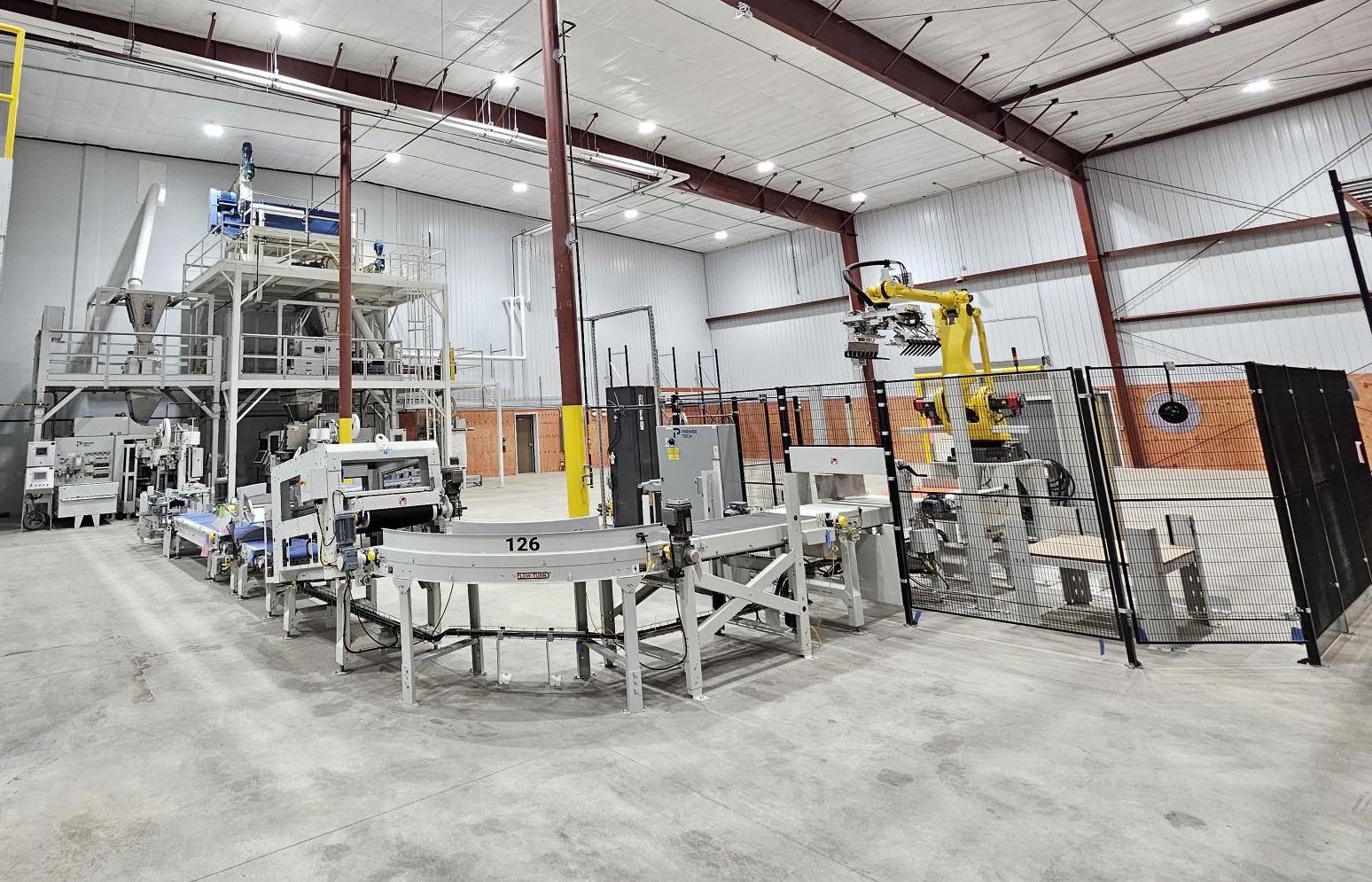Investing for the Future
May 08, 2024

As the Waupun Mill project's construction phase continues to progress, we begin the startup phase. Our hope is to start the clean-out phase by the end of May. Bulk and bagged ingredients will begin to come on-site the first week of June. We are getting close to making this investment a reality.
The Waupun mill site is set to boast an impressive array of features, including 76 bulk ingredient bins with a total capacity of 8500 tons, 8 different liquid feed ingredient options, and both bulk and bagged texturized calf feed blenders. We will also have 15 ton per hour Pelleting capabilities, 10 ton per hour Steam Flaked corn capacity, and the ability to process grain at a rate of 52 tons per hour. This mill will feature fully automated packing for both dry feeds and high molasses feeds, precision blending of micro ingredients with 32 micro ingredients bins of varying capacity, and a separate mineral mixing system for manufacturing minerals and premixes. These capabilities are designed to meet our customers' diverse needs and to ensure the highest quality of our products.

The rail portion of receiving is nearly completed, and we should be able to receive bulk ingredients by July. We can receive and unload up to 25 rail cars at one time of a feed ingredient such as Canola meal. Rail will play an important role in feed manufacturing, both in terms of transportation costs and labor efficiencies.
The 40,000 Sq ft warehouse is completed, and the pallet racking has been installed. This warehouse will have the capacity to hold 68 semi-loads of bagged ingredients. The bagged ingredients will be used in manufacturing and for shipping packaged goods to your farm and to our other feed mills.

A new feature that we will be using in Waupun will be the use of UPC tracking and product identification. This information helps us with inventory management, and product traceability.
This expansion in the feed industry is a testament to United Cooperative's unwavering commitment to providing quality products and services at competitive prices. We understand that the quality of our products and services is paramount to you, our valued customer. As we embark on this new chapter, we are dedicated to finding innovative ways to add more value and enhance our services, ensuring that we deliver on our promise of bringing more value every day.
The Waupun mill site is set to boast an impressive array of features, including 76 bulk ingredient bins with a total capacity of 8500 tons, 8 different liquid feed ingredient options, and both bulk and bagged texturized calf feed blenders. We will also have 15 ton per hour Pelleting capabilities, 10 ton per hour Steam Flaked corn capacity, and the ability to process grain at a rate of 52 tons per hour. This mill will feature fully automated packing for both dry feeds and high molasses feeds, precision blending of micro ingredients with 32 micro ingredients bins of varying capacity, and a separate mineral mixing system for manufacturing minerals and premixes. These capabilities are designed to meet our customers' diverse needs and to ensure the highest quality of our products.

The rail portion of receiving is nearly completed, and we should be able to receive bulk ingredients by July. We can receive and unload up to 25 rail cars at one time of a feed ingredient such as Canola meal. Rail will play an important role in feed manufacturing, both in terms of transportation costs and labor efficiencies.
The 40,000 Sq ft warehouse is completed, and the pallet racking has been installed. This warehouse will have the capacity to hold 68 semi-loads of bagged ingredients. The bagged ingredients will be used in manufacturing and for shipping packaged goods to your farm and to our other feed mills.

A new feature that we will be using in Waupun will be the use of UPC tracking and product identification. This information helps us with inventory management, and product traceability.
This expansion in the feed industry is a testament to United Cooperative's unwavering commitment to providing quality products and services at competitive prices. We understand that the quality of our products and services is paramount to you, our valued customer. As we embark on this new chapter, we are dedicated to finding innovative ways to add more value and enhance our services, ensuring that we deliver on our promise of bringing more value every day.